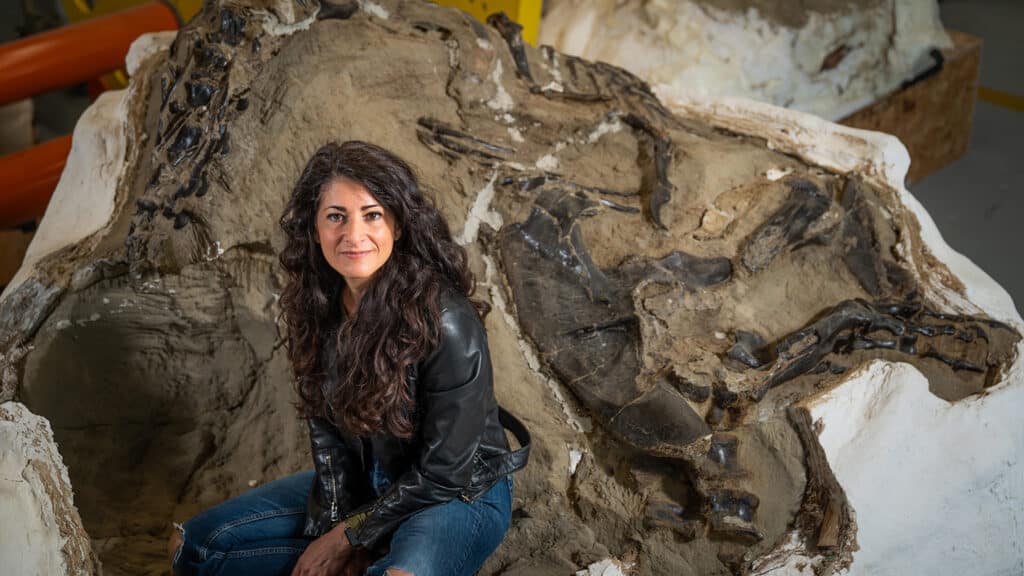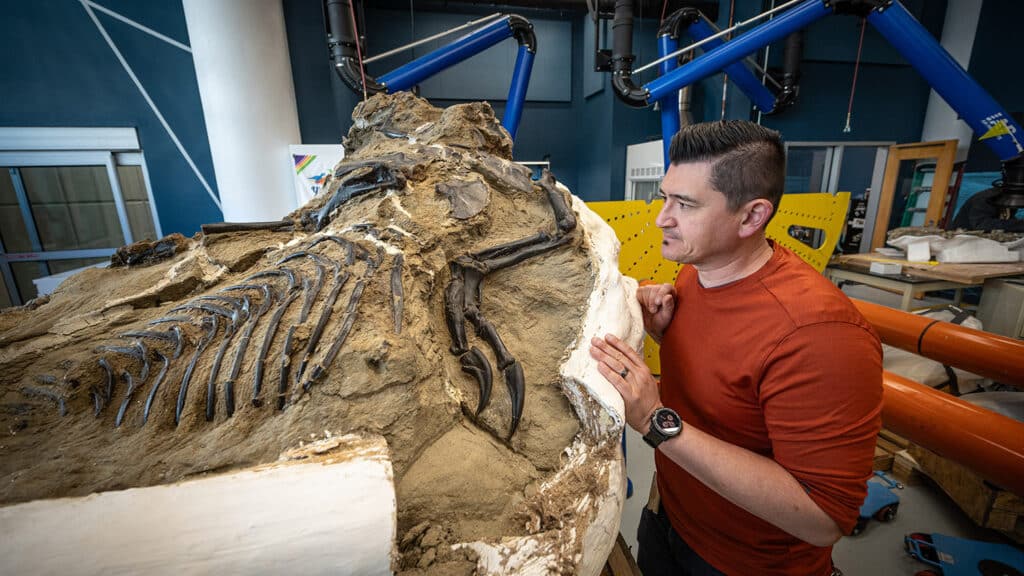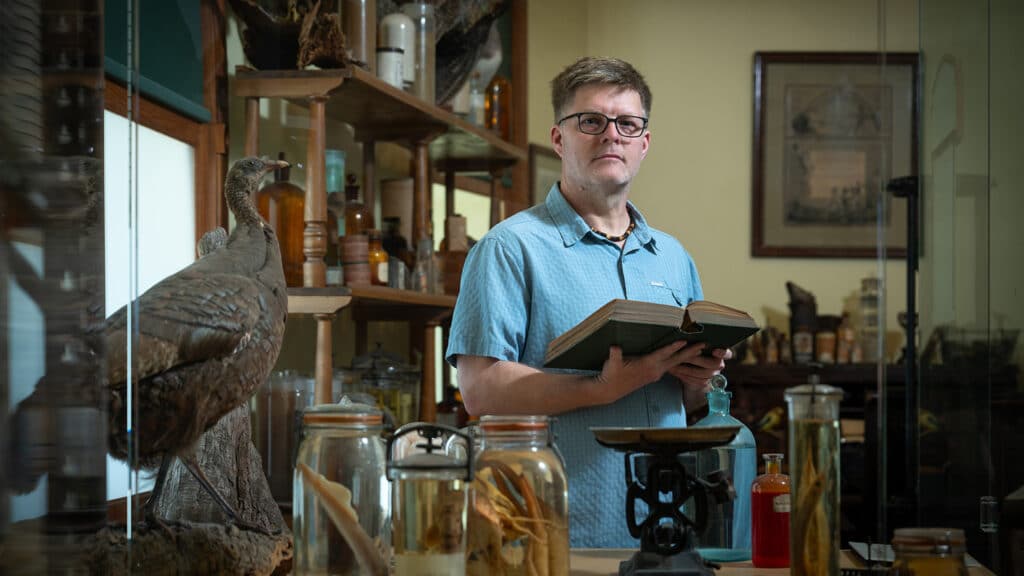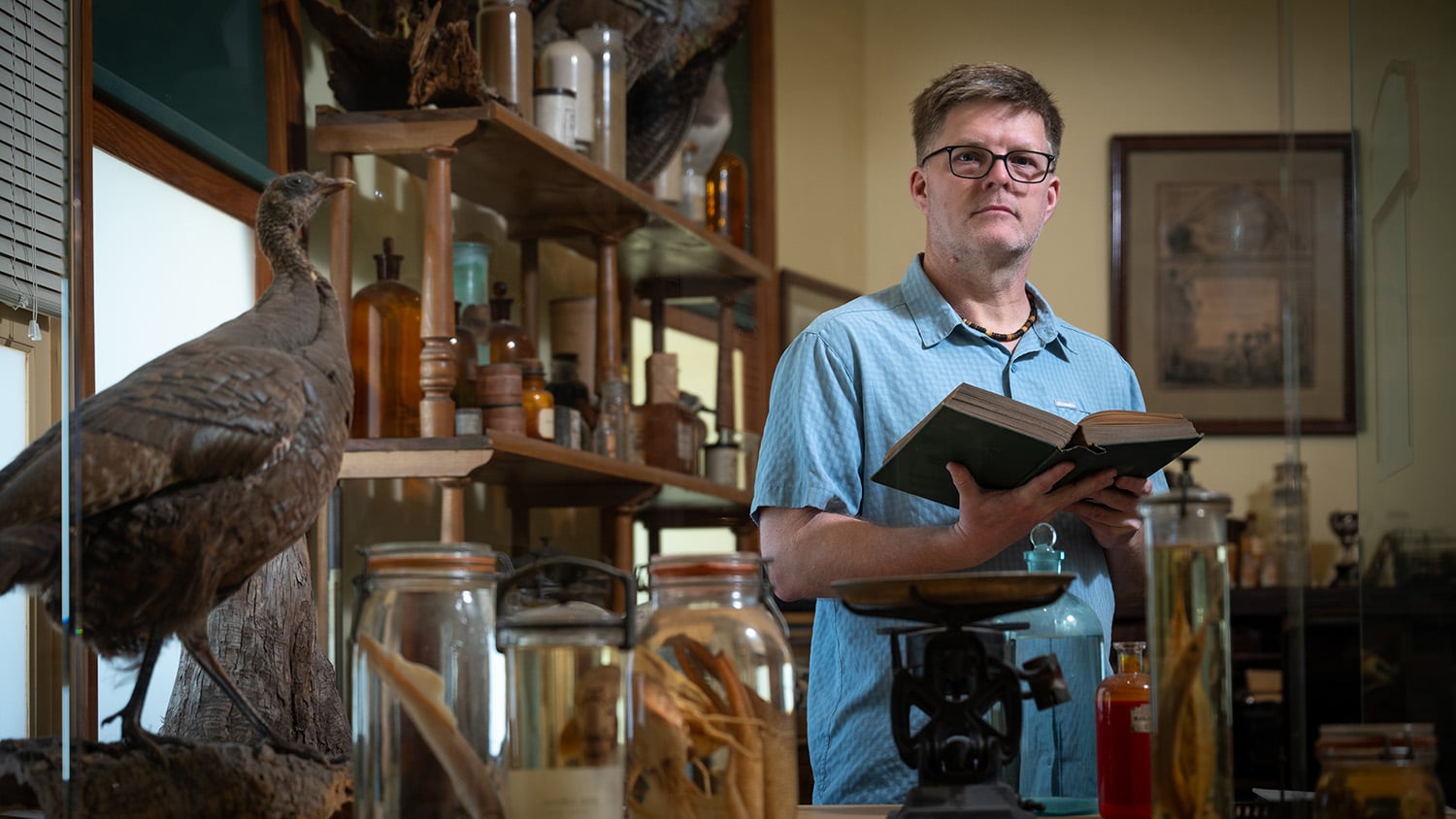When people visit museums, they get to see scientifically, culturally and historically significant specimens and artifacts that have been preserved through the ages. But they rarely get to see the active research constantly taking place within their walls. NC State and the North Carolina Museum of Natural Sciences (NCMNS) decided to change that.
Total Transparency
Through the University-Museum Partnership, the public can see who scientists are, what they're doing and why it matters.
Get the backstory
In 2012, they hired the first jointly appointed faculty member as part of an innovative partnership that would allow NC State faculty to conduct research in open-to-the-public settings at the museum. Today, there are six joint-appointed faculty. They split their time between teaching at NC State and making discoveries at the museum as visitors peer into their glass-walled labs.
On your next visit to the natural sciences museum in downtown Raleigh, you'll cross paths with everything from mighty dinosaurs to crawling insects - and the NC State scientists that study them.
Meet the Joint-Appointed Faculty
- Paul Brinkman, teaching associate professor in NC State's Department of History (College of Humanities and Social Sciences), and head of the Environmental Humanities Research Lab and curator of special collections at the museum
- Lily Hughes, research assistant professor in NC State's Department of Marine, Earth and Atmospheric Sciences (College of Sciences) and curator of ichthyology at the museum
- Roland Kays, research professor in NC State's Department of Forestry and Environmental Resources (College of Natural Resources) and director of the museum's Biodiversity Research Lab
- Liz Kierepka, assistant research professor in NC State's Department of Forestry and Environmental Resources (College of Natural Resources) and senior scientist at the museum's Biodiversity Research Lab
- Adrian Smith, research assistant professor in NC State's Department of Biological Sciences (College of Sciences) and head of the museum's Evolutionary Biology and Behavior Research Lab
- Lindsay Zanno, associate research professor in NC State's Department of Biological Sciences (College of Sciences) and head of paleontology at the museum
Brinkman and Zanno: Digging Up Dinosaur History
Sixty-seven million years ago, a tyrannosaur and a Triceratops became entangled and entombed together on land located in modern-day Montana. Today, they're at NCMNS, where they'll spend the next five years being studied by paleontologist Lindsay Zanno and her team.
The fossils will be part of a first-of-its-kind open lab experience called "Dueling Dinosaurs," slated to open to the public on April 27. Found by private citizens in 2006 in the Hell Creek Formation in Montana, the fossils are unprecedentedly well preserved and could help paleontologists answer some of the most pressing questions about dinosaurs.
"These animals were buried as carcasses with all their soft tissues on, and so every bone in their body is in place as it would've been in life. But also, these are two animals - predator and prey - that were buried together in a single moment in time, back in the Cretaceous," Zanno said.

Historian of science Paul Brinkman, whose expertise is in 19th and 20th century vertebrate paleontology and geology, has a special appreciation for the "Dueling Dinosaurs" fossils.
Research in Real Time
The public will see the mysteries of the "Dueling Dinosaurs" unfold along with Zanno's team. Keep up with their findings on social media or via the livestream that will be available.
"When people ask me what I do, I usually say I write books about people who write books about dinosaurs. But I've also done a lot of dinosaur field work myself," Brinkman said. "I was out in Montana doing field work during the summer of 2006, when the 'Dueling Dinosaurs' fossils were found, and so I went to see them. I was blown away. I had worked with Sue the Tyrannosaurus rex at the Field Museum of Natural History. That's currently the most complete T. rex in the world, so I've seen some nice dinosaurs. The 'Dueling Dinosaurs' specimens are spectacular. I don't know that I've ever seen a more amazing tyrannosaur than that one."
Zanno and her team will first study the specimens to uncover the physical characteristics, diet, age and cause of death of the dinosaurs. They'll also try to determine what kind of interaction the tyrannosaur and the Triceratops were having when they died. The paleontologists will then see if the specimens can help them answer bigger-picture questions about the biodiversity and ecosystem in North America before the mass extinction event.
Zanno wants the public to be involved every step of the way. As part of the interactive "Dueling Dinosaurs" exhibit, visitors will get to walk into the lab and watch the team of paleontologists make discoveries in real time. There will also be a member of the paleontology team on hand at all times to answer visitor questions.
"What is so special about these fossils, from my perspective, is that they allow us to teach the public about the process of science," she said.

Of course, one-of-a-kind fossils called for a one-of-a-kind research lab.
"We've spent many years designing incredible interactive experiences, starting with the lab itself," Zanno said. "We decided we were going to get rid of the glass altogether, and we were going to invite the public to come inside the lab space itself. As far as I know, that's never been done anywhere in the world. This is the first open-access science lab of its kind."
Museum visitors will also get to do hands-on paleontology work themselves. Next to Zanno's research lab is a replica of it, in which visitors can try their hand at activities like running CT scans on fossils and reconstructing soft tissues like the inner ear.
"The public learns how we use that information to determine what frequencies a dinosaur could hear 66 million years ago," Zanno said.

With its innovative and interactive features, "Dueling Dinosaurs" is positioned to set a new standard for dinosaur exhibits and public engagement. Dinosaurs are staples in natural science museums nowadays, but prior to the turn of the 20th century, that wasn't the case.
"We all take it for granted that you can go to any natural history museum and see a dinosaur. There was a time when they weren't in museums at all, because they were so impractical to display," Brinkman said. "At the turn of the 20th century, a group of young paleontologists solved these logistical problems, like, 'How do you mount 900-pound bones into a lifelike skeleton for people to see?' And without a bunch of scaffolding that's going to make the exhibit look unattractive."

A Humanist in a Science Museum
While scientists study the workings of the natural world, Paul Brinkman studies scientists - what they did and how they did it. The sole humanist out of the six joint-appointed faculty, Brinkman specializes in studying the history of late 19th and early 20th century natural sciences, particularly geology and vertebrate paleontology.
Brinkman also studies the history of museums themselves, and serves as curator of NCMNS' special collections. When he's not researching, writing or teaching - he offers a history course called "Dinomania: Dinosaurs in Culture and Science," among others - you might find him dressed up as Charles Darwin or zoologist H.H. Brimley at one of the museum's many special events.
The joint-appointed position has a special perk for him. "My colleagues at the museum talk about biology, geology, chemistry and genetics, and that's not my stuff. I get more out of eavesdropping because my subject is the people who do the science," Brinkman said. "I don't have anybody at the museum that I can talk to about, 'How do you do your history of science? How do you treat your sources?' And so the chance to integrate myself into NC State's history department and have humanities colleagues has been a golden opportunity for me."






